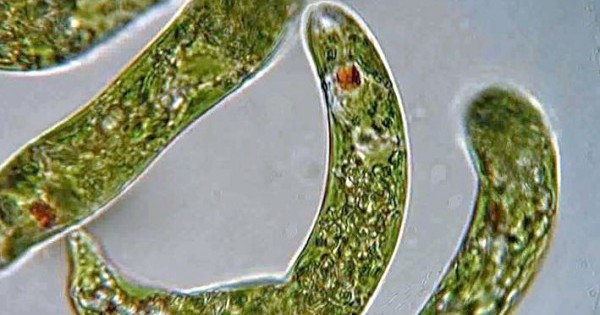
In the past half year, Google has acquired no less than eight robotics companies. They include Boston Dynamics, maker of defense-financed projects such as BigDog, a running, leaping, climbing all-terrain mechanical beast that can carry packs weighing up to 340 pounds; and Bot & Dolly, creator of robotic camera systems. These robots are, to quote my brother Jeffrey Glausiusz—an expert in applied robotics and automation—“generally big, very mechanical with wires running all over the place.”
Marino Arroyo and Antonio DeSimone have a very different vision of the robot of the future. Their robot would be small, squidgy, flexible, and based on Euglena, a genus of organisms familiar to generations of budding biology students.
For Arroyo, and for DeSimone, an engineer and mathematician at the Polytechnic University of Catalonia-Barcelona Tech, the terrain through which their robot would slide is the fluid-filled human body, not the battlefield envisaged by Boston Dynamics. For this purpose, Euglena would seem to be the perfect prototype: the single-celled organism, first glimpsed in 1675 by the earliest microscopist, Dutchman Antonie van Leeuwenhoek, is abundant in both fresh and salt waters, where it swims with the aid of a whip-like flagellum.
Euglena can also bend and slide with the aid of its flexible body envelope. As Arroyo explained to me in an email message, the envelope is made of many juxtaposed, interlocked flexible strips. In the space where these strips touch are molecular “motors”—microscopic “machines” that drive muscle movement and generate energy in cells. “These motors can produce relative sliding between these strips,” Arroyo wrote, “and the organism can modulate in time and space the amount of relative sliding between adjacent strips.”
Although theoretical, the researchers say that their work holds great potential. Arroyo and DeSimone plan to replace the cogs and wheels of conventional robots—which can’t be made below a certain size—with soft rubber-like materials that deform as a result of changes in light, temperature, electric field, or acidity. If they succeed, such “swimming micro-robots” could transport drugs to specific sites within the human body, or clear clogged blood vessels, or help heal wounds.
The Euglena partners were pleased to illuminate the mechanics of movement of these “animalcules,” described by van Leeuwenhoek more than three centuries ago as “so swift, and so various, upwards, downwards, and round about, that it was wonderful to see.” Back then, of course, “relatively little was known about the physics and mechanics of how they execute these motions,” Arroyo told me. “When we realized that much of what is observed could be understood with a simple mechanical/mathematical model, we became very excited.”

